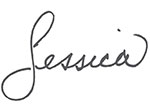Updated 12/29/20
Recently, I felt stuck in a rut business-wise. This puzzled me because, for nearly a year, I’d done the work required to take my business to the next level.
I had journaled, visualized, repeated affirmations, and taken daily action in pursuit of my goals. Additionally, I had pushed myself to leave my comfort zone and achieved most of my objectives.
Despite my progress, however, I felt as though I was driving a car whose wheels were spinning on ice.
But what could I do about it?
It was in that place of questioning that I sat down to write an article. An article about the importance of having a vision for your business.
And that’s when it hit me: I didn’t have a clearly defined business vision of my own. Not that I didn’t know how I want to treat those I serve (with care). Nor how I want them to feel as a result of working with me (delighted).
But I hadn’t condensed my thoughts about the future of my business into something brief and compelling. So, I opened a text editor and, after several tries, wrote the following statement:
Copywriting Goddess vision: To be a source of delight for my clients and customers. Now and in the future.
I liked the way the words felt. “To be a source of delight” felt like the freedom to provide value through consulting, writing, teaching, and many other ways. “Now and in the future” felt like stability.
As I thought about these ideas, I felt uplifted. And I appreciated the feeling of forward momentum they inspired. I was off to a good start.
However, for a vision statement to be truly inspiring, it must include details about multiple aspects of your business.
And this requires more than a few brief sentences.
I learned this from Cameron Herold, who, while COO of 1-800-GOT-JUNK?, took the company from 2 million to 106 million.
Known worldwide as the CEO Whisperer, his Ted Talk on why your vision statement sucks and what to do about it is a must-see!
Yours for a better tomorrow,


